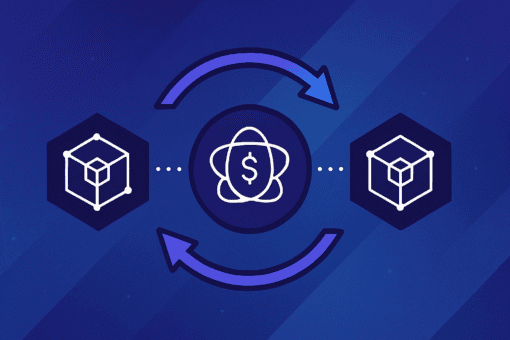Smart contracts are only as powerful as the data they can access. While blockchains excel at managing internal states, they struggle to interact with external data sources. This is where cross-chain oracles come in, acting as bridges between decentralised networks and the real world, while also enabling communication between chains.
Oracles have long been vital to blockchain infrastructure. They feed smart contracts with off-chain data like prices, weather, or outcomes. But as blockchains become more interconnected, the next generation of oracles must go further — providing secure, verifiable data across multiple networks.
In this article, we explain how cross-chain oracles work, why they matter, and how they support the next wave of blockchain interoperability and use cases.
What Is a Cross-Chain Oracle?
A cross-chain oracle is a service that provides data to multiple blockchains and enables information sharing between them. Unlike single-chain oracles, which serve one network at a time, cross-chain oracles are built to operate across ecosystems.
These oracles provide price feeds, identity verification, event triggers, and system state updates. For example, they might inform a lending protocol on Avalanche about Ethereum-based asset prices, or alert a Cosmos app to events happening on BNB Chain.
By facilitating secure, decentralised data flows between chains, they unlock composability at scale.
How Does It Work
Most follow a similar structure:
- Data gathering: The oracle pulls data from off-chain APIs or from events on other chains.
- Verification: Multiple nodes validate the data to avoid manipulation or single points of failure.
- Relaying: The data is formatted and relayed across chains using secure transport layers.
- Delivery: Smart contracts receive the data on the destination chain and execute logic based on it.
Some cross-chain oracles use bridging infrastructure, while others rely on messaging protocols such as LayerZero, IBC, or Polkadot’s XCM. The goal is always to maintain integrity, minimise latency, and reduce trust assumptions.
Leading Cross-Chain Oracle Providers
Several projects are developing cross-chain oracle solutions:
- Chainlink CCIP (Cross-Chain Interoperability Protocol): Offers decentralised messaging and data transfer across chains.
- Band Protocol: Provides oracle functionality to multiple blockchains, including Cosmos and Binance Smart Chain.
- API3: Uses first-party oracles and aims for cross-chain compatibility with decentralised APIs.
- Witnet: Focuses on verifiable data availability and cross-chain delivery.
- UMA: Uses optimistic oracles that support data transfer across chains with dispute resolution.

Each has its own architecture, security model, and supported chains. Adoption depends on use cases, ecosystem partnerships, and integration ease.
Use Cases for Cross-Chain Oracles
Cross-chain oracles power a wide range of decentralised applications:
- DeFi: Providing real-time asset prices, interest rates, and liquidity data across chains
- Insurance: Feeding event data, such as rainfall or flight cancellations, into multi-chain claim contracts
- Gaming: Synchronising scores, player activity, or item states across blockchain-based games
- Cross-chain governance: Notifying governance contracts about votes or proposals happening on other networks
- Stablecoin issuance: Verifying reserves or collateral health across ecosystems
The ability to use consistent, verifiable data across chains increases the reliability and composability of decentralised services.
Challenges and Risks
Cross-chain oracles must address several challenges:
- Security: Data integrity and transport layers must be protected from manipulation or exploits.
- Latency: Fast data delivery is critical for time-sensitive applications such as arbitrage or liquidation.
- Scalability: Oracle networks must handle large data volumes and multiple chain integrations.
- Cost: Frequent data relays across chains can be expensive if not optimised.
- Trust assumptions: Some oracle systems introduce trusted third parties, which may affect decentralisation.

To be effective, cross-chain oracles must balance decentralisation, speed, and cost — without compromising trust.
Cross-chain oracles are not just a utility layer, they are a critical enabler of blockchain composability. By making trusted data available across multiple networks, they expand the range and reliability of decentralised applications.
As more protocols go multi-chain and demand real-world data, cross-chain oracles will become even more essential.

